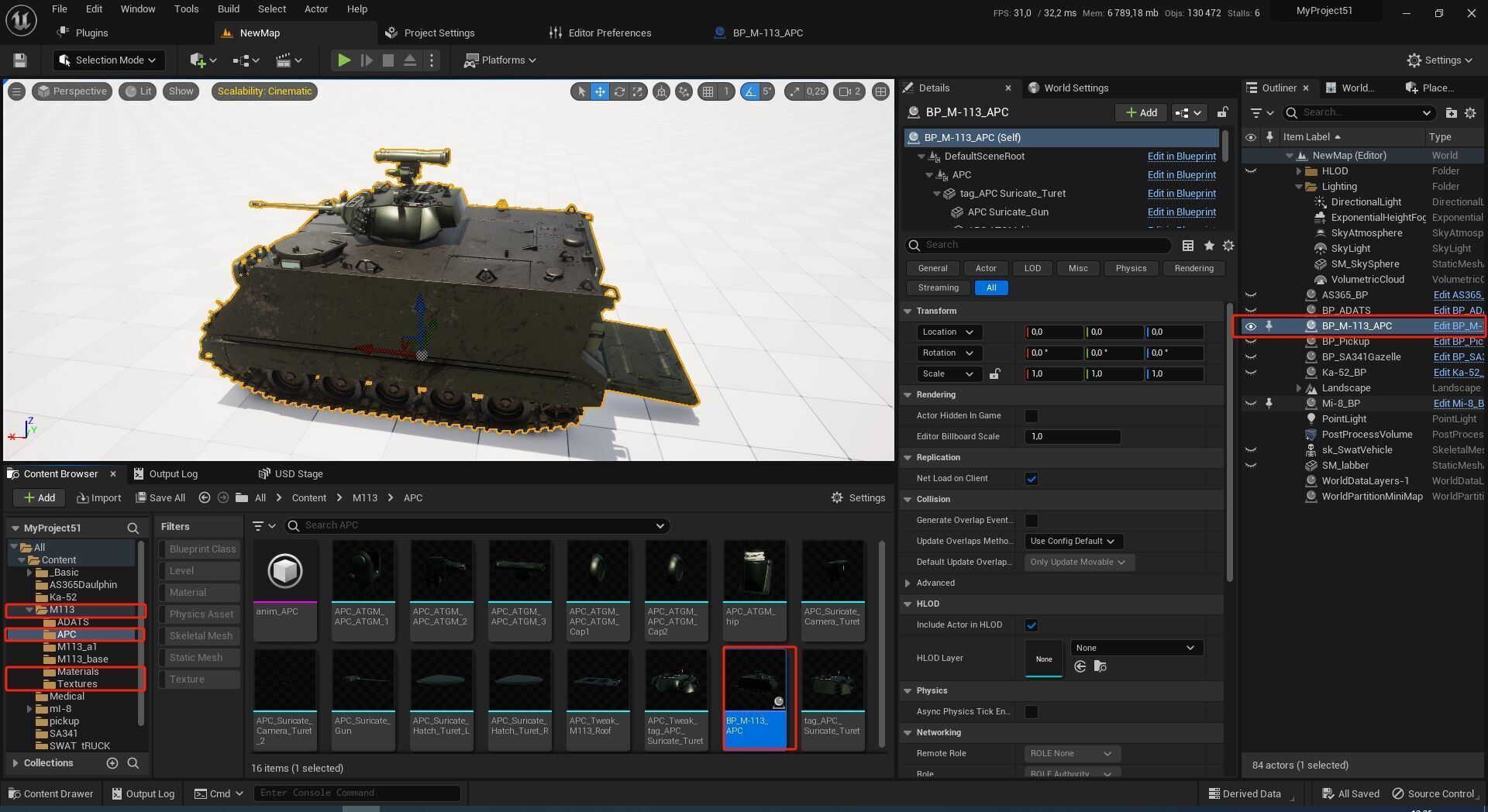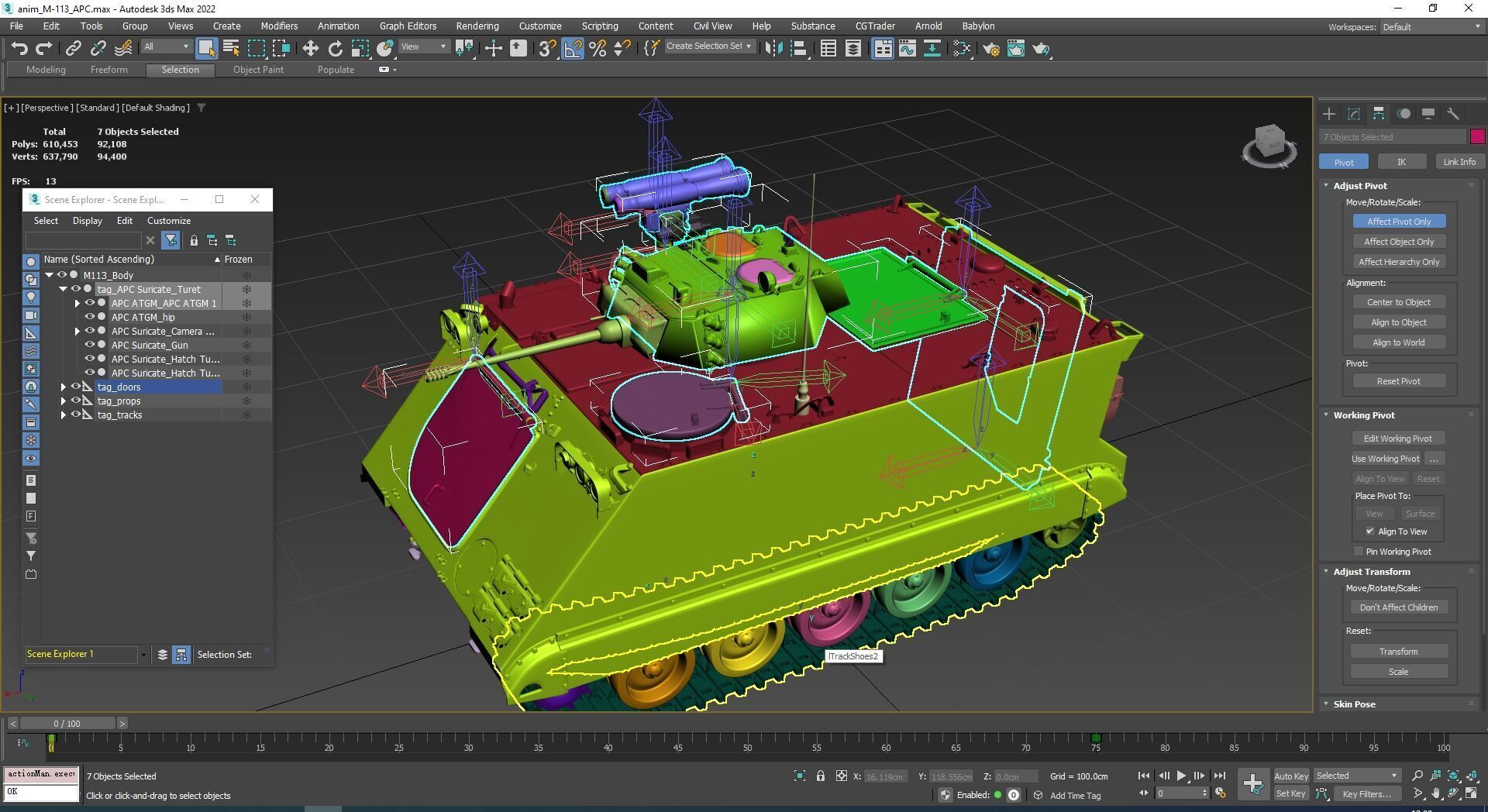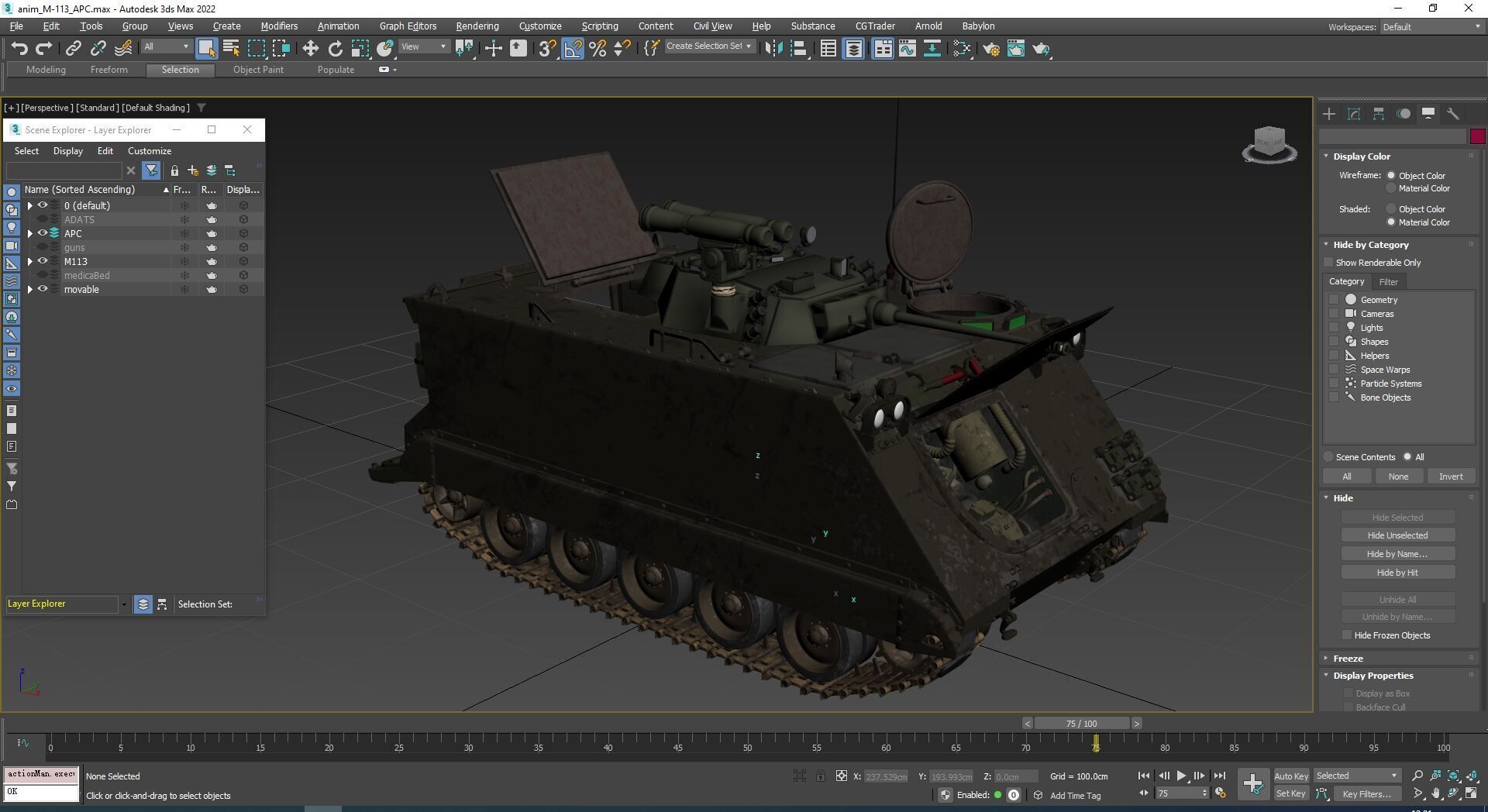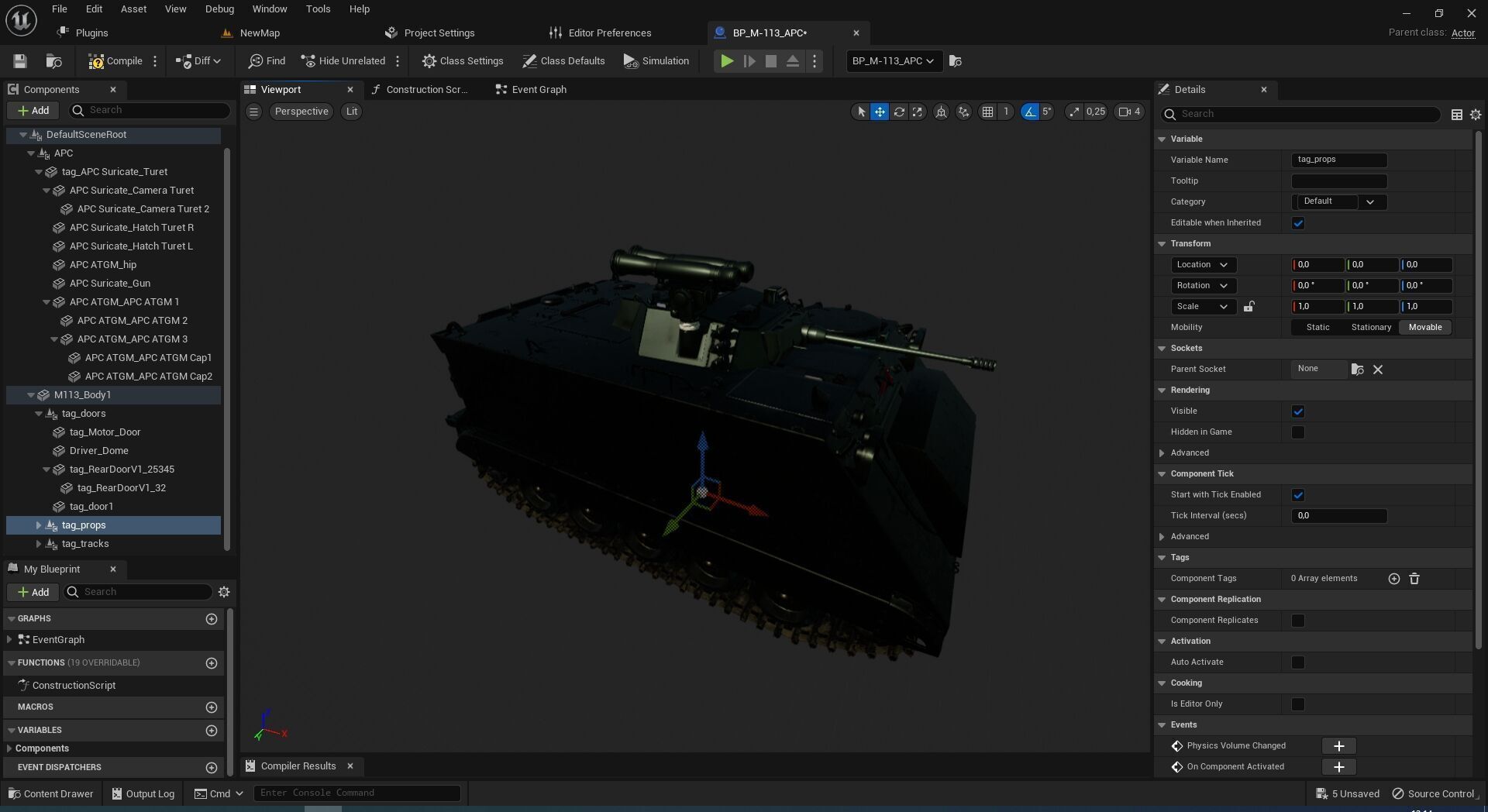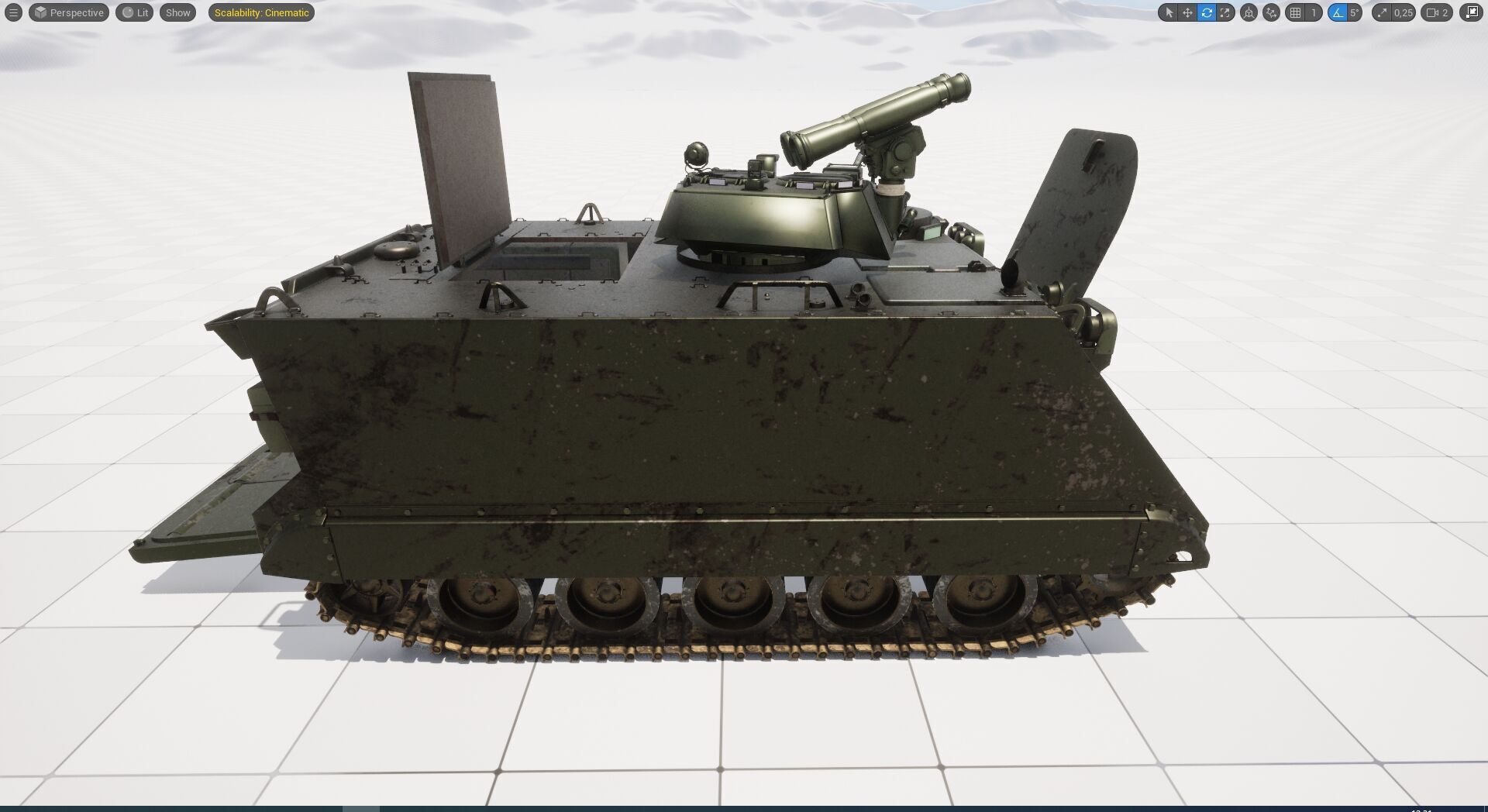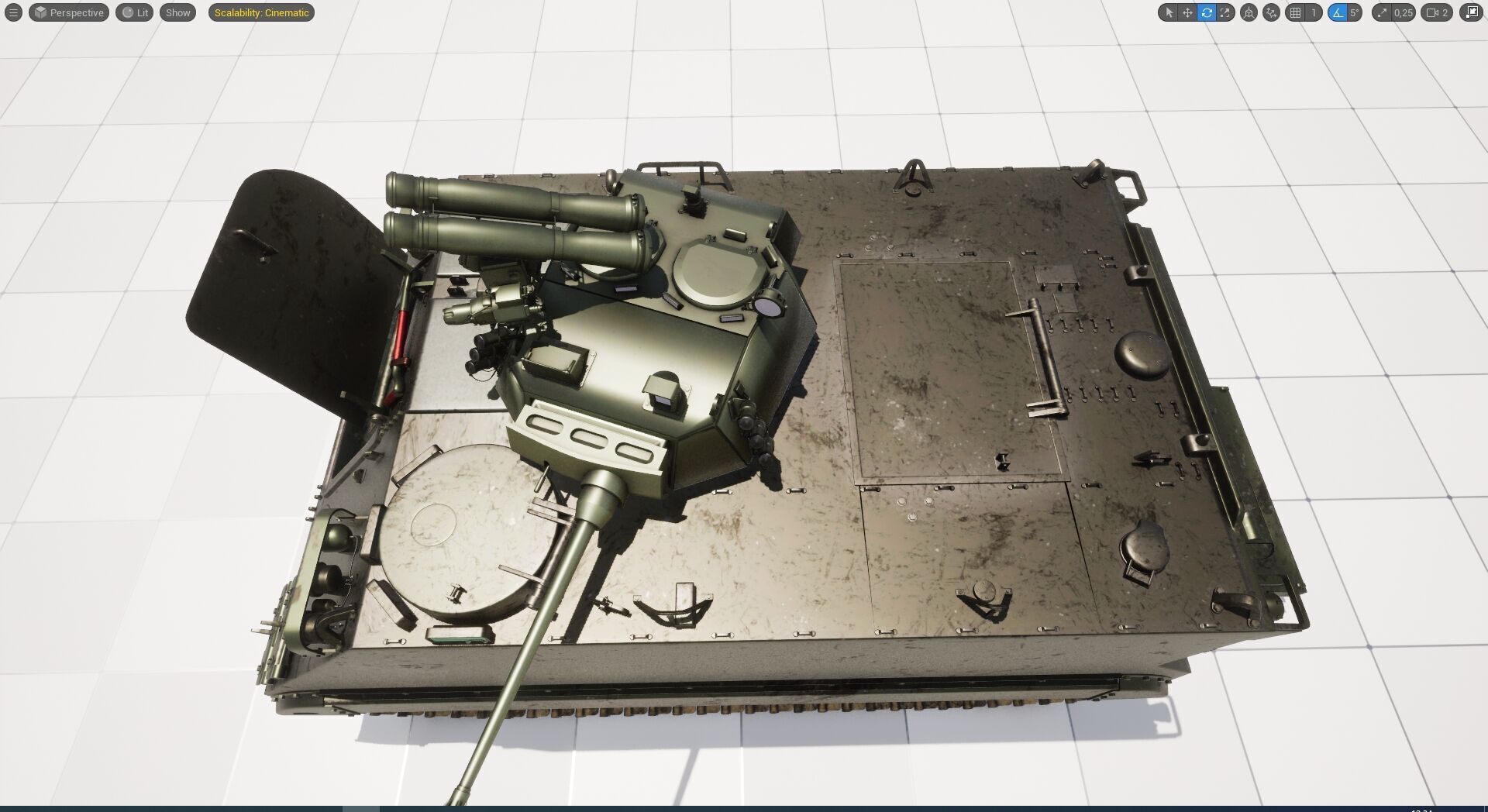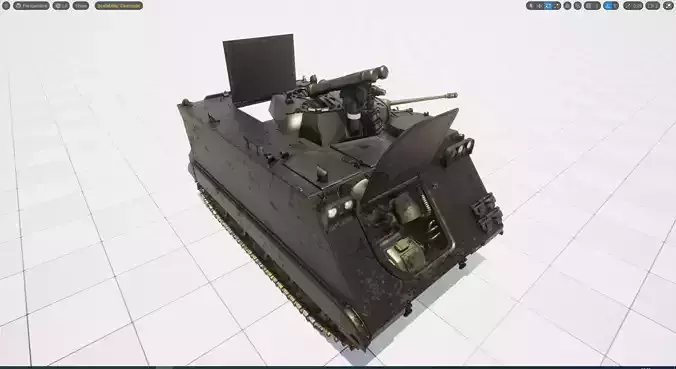
M-113 APC Carrier 3D model
3D model M-113 APC Carrier is created in 3ds max2022, rendered in Unreal Engine 5.1.
Doors, turret, domes, gun, wheels and other gears are seperated and be animatable.
World scale unit: Centimeters
Probably since ww2 and the Universal Carrier, no armored transport has been produced to the extent of the M113, and this remains a record until today at least for a tracked vehicle. Of both vehicles, the Universal carrier (also called Bren Carrier) was even more prolific (113,000) but never approached the second in terms of versatility and overall performances. The M113 was a true modern battle wagon, amphibious, NBC protected, and offering a full protection to its crew while the second was a light, cheap open-top tankette which left the crew largely unprotected. The M113 is no longer in use as an APC in the United States Forces and US Marines, but in specialized variants, now largely superseded by the M2/M3 Bradley IFVs.
It is still in use however in perhaps 50 armies worldwide, and will probably be still around in the next twenty years, not always as an APC as one of the numerous variants and derivatives of the model, also built under license or copied. It should be noted that the absolute record is now held by the practical successor of the Jeep and classed now as a wheeled APC, the Humvee and its 280,000 vehicles built.
Such production levels, still, are unusual for a Western tracked Armoured Vehicle. It is due to a concept validated over time by the Food and Machinery Corporation, and which was good overall in its basic version to be adapted in a large variety of configurations. It was bloodied in dozens of conflicts due to its large availability, and named The Green Dragon by the Viet-Cong, during the Vietnam war, where it became as familiar and iconic as the Huey helicopter. However contrary to the opinion of some, it was never, neither officially or unofficially called Gavin. GIs used to call it simply the one-one-three, track or ACAV by generalization in Viet-Nâm. The Australian called it the bucket and Bush taxi and the Germans the bathtub or elephant shoe, which the Greek nicknamed it the Ducklings.Development historyThe recipe for its success lay paradoxically in the relatively failed previous products of the Food Machinery Corp (FMC). The M75 was heavy and expensive, which prevented amphibious capability or prevented air transportation while the second was the opposite, too lightly armored to protect the crew with efficiency and tradeoffs in production due to cost savings caused reliability issues. The third APC addressed all these issues in a single package, called the Airborne Armored Multi-Purpose Vehicle Family or AAM-PVF.
It was already in project in the 1950s when the Kaiser Aluminum and Chemical Co. was approached to design a suitable hull, offering both weight-savings and protection. Two versions were engineered in 1959, the aluminum-skinned T113 and the steel T117. They were demonstrated to the US Army Ordnance and eventually the T113 was chosen and modified as the T113E1 in 1960. At the same time, the truncated nose was modified as a straight sloped front plate, which became its trademark. It was later standardized as the M113 the same year, mass-produced and pressed into service in 1961.

